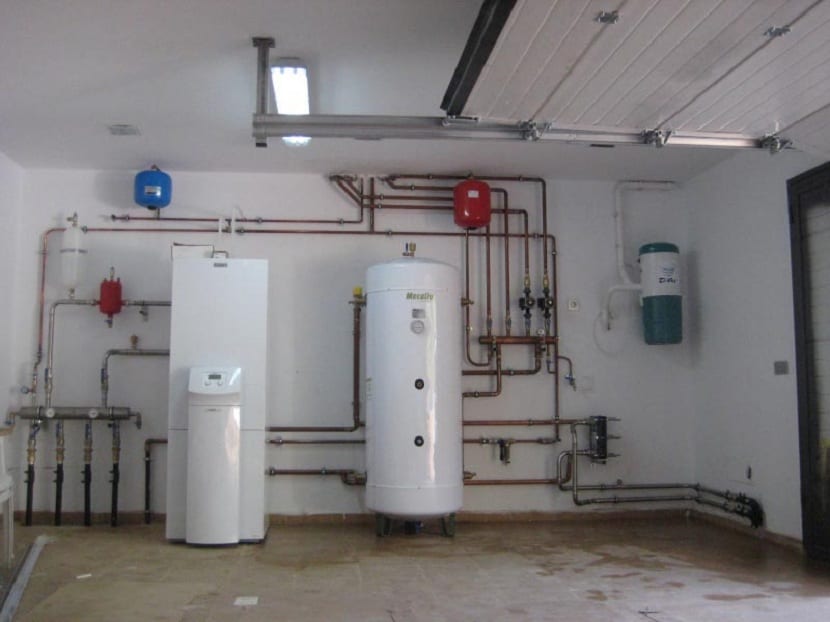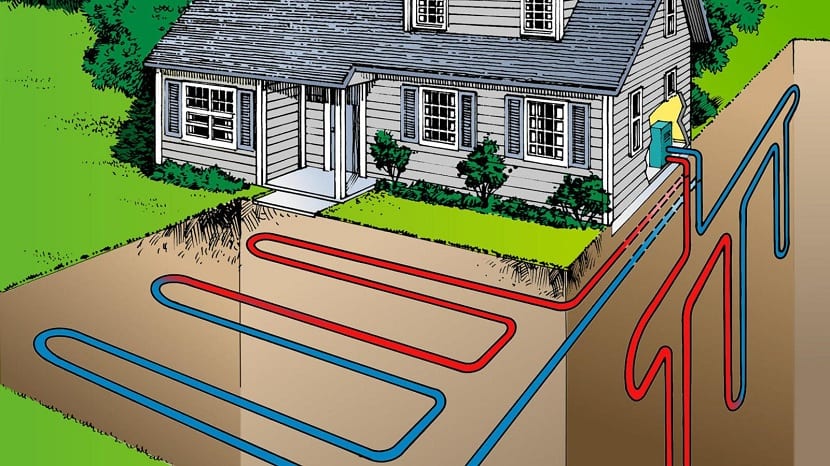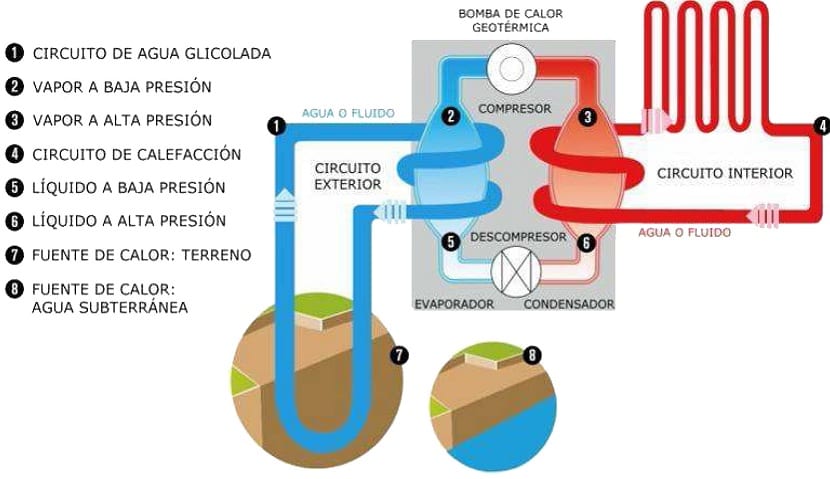
In previous articles we have talked about geothermal heating. In it, we talked about one of the necessary components to use this type of heating was geothermal heat pump. Its operation is similar to that of the common heat pump. However, the heat energy it uses is extracted from the ground.
Do you want to know in depth the operation and characteristics of the geothermal heat pump? This information can be very useful if you are going to install heating in your home 🙂
Geothermal heat pump

To refresh the concepts a bit and work the rest of the article well, we will review the definition of geothermal heating. It is a heating system in which we use hot water to heat the interior of a building. That heat comes from rocks or groundwater and is capable of running an electric generator. It is a concept, therefore, within the field of geothermal energy.
The geothermal heat pump can work anywhere. This use has been spreading throughout society, to such a level that it is increasing by 20% annually. When we touch the tubes at the back of a refrigerator, we can see that heat is being absorbed from the inside of the appliance and radiating it to the rest of the kitchen. Well, the heat pump works in a similar way, but in reverse. It is capable of taking the heat that is outside and releasing it inside. It is as if you are trying to cool the outside.
Operation

Both in a refrigerator and in a heat pump, there are tubes that circulate a refrigerant fluid. This fluid is able to heat up when compressed and cool when expanded. If we want to heat the house to stay well in winter, the hot fluid that is compressed will circulate through the heat exchanger that heats the air feeding a conductive system.
You could say that the fluid is already "used." After that, it cools and expands, coming into contact with the geothermal source that "recharges" it with heat. This process is repeated over and over for continuous heating.
One thing to keep in mind is that pumping the fluid requires electricity. The geothermal heat pump is more efficient than other pumps or other heating alternatives. The systems that currently exist They are capable of producing up to 4 kW of heat for every kW of electricity that is generated. This makes them very efficient, since they do not need to generate heat, but to extract it from underground.
On the contrary, there are not only pumps that heat the house. You can also refrigerate the house to be cool in the summer time. These pumps are called reversible heat pumps. In this case, a valve is the one that controls the direction of the fluid. Therefore, heat can circulate in two directions.
Ways to extract geothermal energy

Many people who use this type of heating are already familiar with geothermal heat pumps. The great advantage is to use the air from outside to heat the home. Earth's heat is infinite, so it is considered a type of renewable energy. You can have heating whenever you need it and in a very comfortable and cheap way. In addition, you will be helping in caring for the environment and reducing greenhouse gas emissions into the atmosphere. In this way we will be reducing the devastating effects of climate change and global warming.
One of the drawbacks of common heat pumps is that their efficiency is diminished when the outside temperature is very cold. This means that when the heat is really needed more inside the home, the pump has less performance. However, this does not happen with the geothermal heat pump, since it extracts heat from the interior of the Earth. Underground the heat is stable and the temperature remains the same even if it is colder outside. Therefore, it does not lose effectiveness at any time.
Vertical and horizontal geothermal heat pump

The most popular way to extract heat is the vertical geothermal heat pump. It is usually installed 150 to 200 feet below the surface. Pipes are installed around the grooves dug underground. Water circulates through them with an added antifreeze fluid that is capable of raising the heat to temper the cooling fluid.
Another alternative is the horizontal geothermal heat pump. In this case, the tubes are filled with water and are buried about 6 feet across under the ground. They are systems that require great extension to be able to generate the appropriate heat to heat a medium-sized building. However, its cost is much lower than the vertical pump.
Many people doubt its effectiveness in areas close to natural water sources such as lakes, rivers and ponds. This is not like this. The geothermal heat pump is just as efficient near these locations as you can use them as an external heat source.
The heat exchange with the exterior terrain is carried out through a geothermal collector, which can be of two types: vertical and horizontal geothermal collectors. In the first case, a circuit of tubes (2 or 4) is placed inside a perforation to 50-100 m deep and 110-140 mm in diameter. In the second case, a horizontal network of pipes is placed 1,2-1,5 m deep.
Initial economic investment
A great barrier that stands in the way of the use of renewable energies is the initial economic investment. As in many sectors, it is necessary to invest capital at the beginning and then amortize it over time. The initial cost of geothermal heating exceeds that of traditional heating systems.
If it is intended to build in a family home can cost between 6.000 and 13.000 euros. This is nonsense for all those people whose work does not earn them large salaries. With that money you can buy a car! However, geothermal heat pumps are profitable in the long run. They allow to reduce the consumption of the energy bill between 30 and 70% in the case of heating and 20-50% in cooling.
I hope that with this information you are ready to use this type of heating and start saving now.